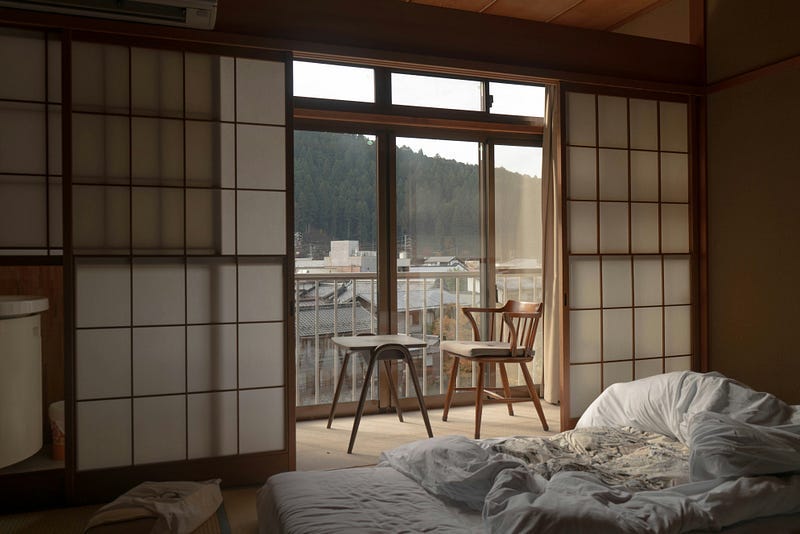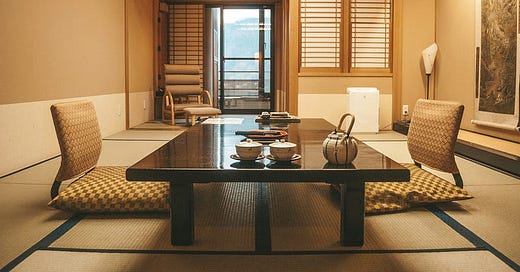Sure you can bench press, but can you sit on the floor?
Japan made me question what it means to be strong.
Japan made me question what it means to be strong.

I’ve always considered myself a physically strong person. From the time I was a little kid, I was always large for my age. I played American football from the time I was in kindergarten and even then, my coaches and teammates would always comment about my strength.
When I entered high school, football became a passion, and I lifted daily. For what felt like every day for four years, I was in the weight room. Olympic style lifts, compound lifts, sprints. I was always at the top of my class and position. This only increased in college, and I had some of the best pound-for-pound lifting numbers on my collegiate team.
After I graduated from college, I hated lifting. Maybe it was because my sport forced me to do it every day for eight years. I wanted more exercise freedom. I tried yoga and many other types of non-lifting exercise, and while I always remained active, nothing ever fully replaced lifting.
During that time, I also started getting more into Japanese culture. I came across many an article or video about the Japanese tradition of sleeping on the futon or sitting on the floor. I tried doing this, but in all honestly it was more about the aesthetic than it was about the health benefits.

After I came to Japan, I saw lifting in a different light. My time off from it had given me a newfound perspective about being strong, and I think I found more confidence in myself. While I had always desired to be slimmer, my natural muscle is quite bulky and thick. Genetically, I was probably never going to have six-pack abs and a perfect cut, no matter how much I lifted. Yet, I liked being strong, and so I continued to lift.
My life in northern, rural Japan is much more physically demanding than my life in America, however. Without a car, I walk everywhere, including the forty minute round-trip to my school. In the wintertime, my town gets nearly 26 feet of snow per year, making my daily walks quite the trek. During the springtime, while I can use my bicycle, I often found that I preferred walking.
My life in Japan is incredibly active. And, it has also brought with it the two things that had fascinated me in America: sleeping and sitting on the floor.
This is really what made me wonder what it means to be strong.
Sure, I can easily pull up a 275 pound deadlift without an issue, but ask me to sit cross-legged on the floor for an extended period and the obaa-chan (grandmother) who owns the tea shop across the street will win that contest every single time. My legs hurt, the middle of my back aches, my hips lock and freeze. It’s painful.
Recently, however, after experiencing severe leg tightness that caused pain when sitting in a desk chair and some problems riding my bike, I did some research.
I stumbled across a YouTube channel called as 和儀®︎Wagi. It is a channel started by Senzaburo Shigeyama during the pandemic that focuses on bringing back some key principles of health that were present in Japan in the past. Mainly, proper breathing, the proper central axis of the body, and the proper way to walk.
While I haven’t explored the full catalog of YouTube videos yet, I truly want to dive in and report back on how this affects changes in my body. As I recently have switched my lifting routine for a yoga and cardio-based routine, I wondered, what makes us strong? Perhaps I am incredibly strong for four seconds when I push weight around, but if my arms shake when I have to hold myself in a prolonged downward dog position, or my core aches after sitting on the floor for a long period, am I really strong?
Strength is an interesting concept and when viewed culturally, I think it’s even less black and white than originally thought. There are many ways to be healthy. If you come to Japan and go on a hike, trust me when I say that the grandmas and grandpas will pass you on the trails left and right.

It’s also interesting to think about strength in terms of cultural values. Traditional Japanese culture, as the Wagi YouTube Channel talks about, was very low to the ground. Aside from sitting or sleeping on the floor, even traditional Japanese toilets are little more than holes in the ground. Nowadays, especially in major cities, there has been a lot of westernization, but in the countryside it is still common to go to someone’s home and sit on the floor in the tatami room.
It’s no secret that Japan has one of the longest life expectancies in the world. But rather than just a long life, I am interested in quality of life as well. Hopefully, as I explore more of these ideas and concepts concerning health and physical fitness in Japanese culture, I can incorporate more of them into my life.
So, cheers to floor sitting. One day I’ll be as strong as the tea shop grandma.
Originally published at http://marcoblasco.com on May 3, 2024.





Thanks for telling us about the YouTube channel called as 和儀®︎Wagi. I need to remember proper breathing, the proper central axis of the body, and the proper way to walk. I used to live in a Japanese style apartment and didn’t even own a chair. Now I live in a western style apartment and I can’t sit on the floor anymore. I used to be able to sit in seiza position for hours but now it’s completely impossible. I recently read that part of the reason older Japanese people are so flexible is that they grew up with Radio Taiso and do it everyday.